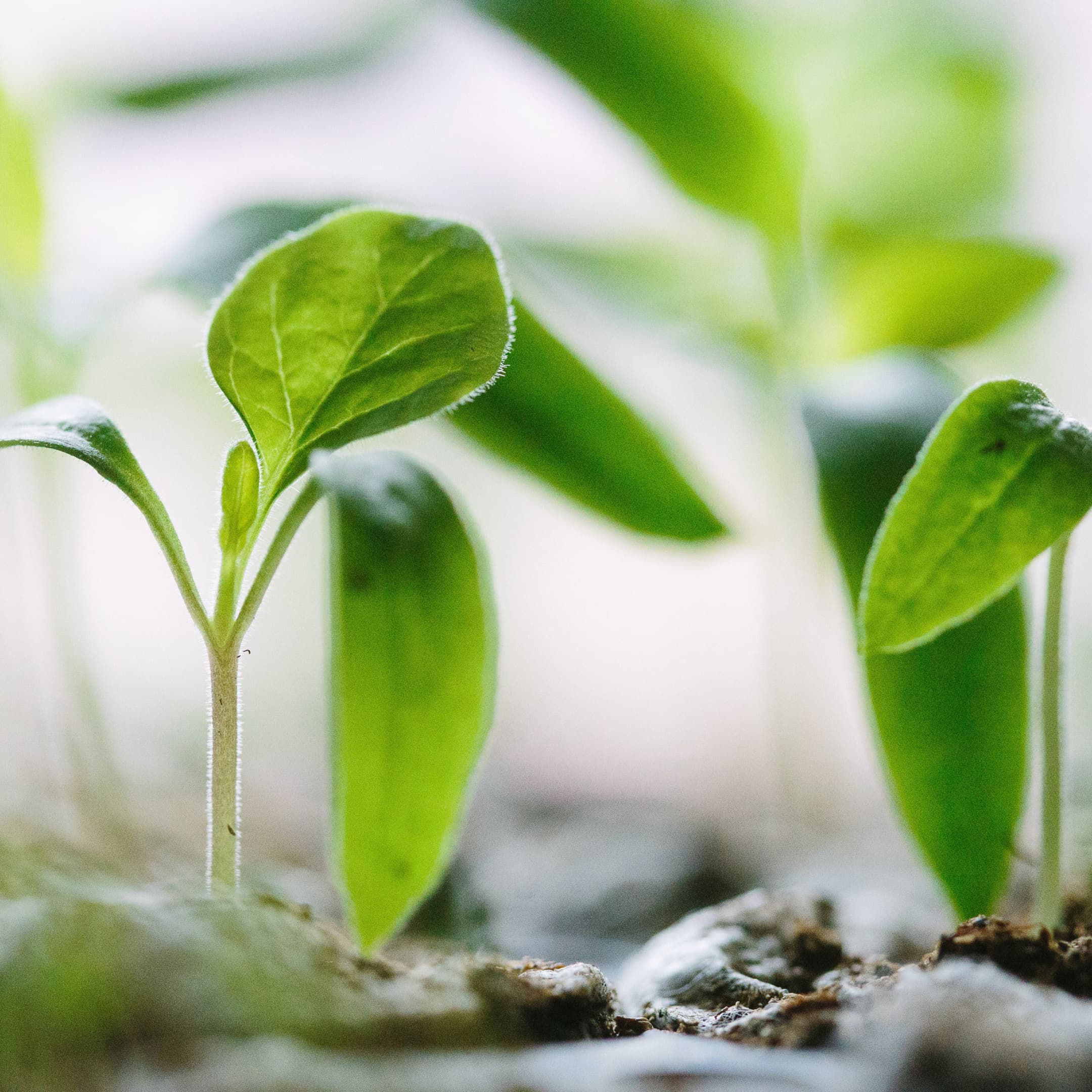Mycorrhizal fungi, often referred to as mycorrhizae (my·cor·rhi·za), are responsible for the symbiotic relationship that allows 90% of vascular land plants to thrive. This crucial relationship exists between your plants’ roots and the soil that they draw nutrients from. While you’re paying attention to the health of your plant above ground, mycorrhizae help ensure your roots are healthy and absorbing the nutrients that your soil offers.
What are Mycorrhizae?
According to Merriam-Webster, mycorrhizae are the symbiotic associations of the mycelium of a fungus with the roots of a seed plant. In layman terms, mycorrhizae are used to describe the relationship that mycorrhizal fungi have with your plant’s roots. These fungi are often referred to by their associations, which is why many of us have long referred to the fungi themselves as mycorrhizae.
Traditionally, there were two types of mycorrhizae: ectomycorrhizal and endomycorrhizal: fungi that operate outside of your plants roots (ecto), and those that penetrate the root surface and work symbiotically within the roots (endo). Now, modern science has recognized seven distinct types of mycorrhizae, each performing unique functions related to root development and health of the overall plant.
Why are Mycorrhizae important?
Mycorrhizae help roots stay healthy, perform better, and, as a result, grow faster and more vigorous. These symbiotic associations draw upon both your plant’s ability to produce sugars through photosynthesis and your fungi’s ability to assist in the processing and uptake of nutrients like nitrogen and phosphorous, as well as increase water absorption.
Think of mycorrhizae like a waiter that’s paid in sugar to bring your plants food and beverages. The plant feeds the fungi carbohydrates and, in turn, the fungi help to process nitrogen and phosphorous in your soil, making them easier to absorb alongside the water your plant needs.
According to the New York Botanical Garden, "In order to maximize both organisms abilities to thrive most plants allow, and indeed require, mycorrhizal fungi to colonize their roots. In this symbiotic and intimate relationship the hyphae of the fungus greatly increases the surface area that is open to nutrient and water absorption, maximizing the plants access to these essential compounds and elements. In return, the plant supplies the fungus with carbohydrates for use as energy.”
3 Qualities to Look for in Quality Mycorrhizae
Not all mycorrhizal products are created equal, and finding a high quality, organic option with multiple mycorrhizal species that is water soluble can prove to be a challenge. There’s a few things to look for when buying and using mycorrhizal products in your garden, namely that they are truly organic, that they indeed contain multiple mycorrhizal species, and that they are water soluble. If not, you could end up with unintended results.
“Organic”
As anyone familiar with the term most surely knows, obtaining organic certification from institutes like the Organic Materials Review Institute (OMRI) is no easy feat to accomplish. Many brands are unable to get their entire mycorrhizal line certified as organic, but may be able to receive certification for one or more specific products. While these particular products may be organic, it is common to generalize this certification across product lines, with brands making claims about organics that may not apply to all of their offerings. Make sure that the specific mycorrhizal product that you are purchasing and using is the one that was certified.
Multi-Species
As discussed, there are seven types of mycorrhizal fungi and they all perform different functions in different environments and assist the roots in different ways. If you are only adding a single species, that’s not going to help much with your overall efforts, especially if that species ends up being less essential to your particular gardening style; it might provide one function, but it may not be the most important to your roots, and won’t offer all of the benefits that all of the species working together can provide.
Water Soluble
I’ve said this before, but, unless you’re aiming for a slow delivery, whatever you’re adding to your garden should be water soluble, especially the mycorrhizae. While outdoor crops have a longer grow cycle and more time to slowly break down and absorb nutrients that are not water-soluble, indoor grows necessitate water soluble options that are delivered to the plant and roots quickly, as needed. Products labeled “granular” or similarly are not water soluble. So, the question you need to ask is: do I need these mycorrhizae now or later? If you time it wrong and your plants don’t see the benefits of mycorrhizae until later, it can actually have a negative impact.
Can mycorrhizae be harmful to plants?
While mycorrhizae can be incredibly beneficial to your plants’ health, too much of a good thing can harm your plants, resulting in root bound plants that may have to compete with mycorrhizae for nutrients at crucial development stages such as those during bloom when the plant is putting its entire energy into flowers and fruits.
Studies have shown that in cases of improper levels of mycorrhizae, "fungi and plant fitness may not be proportional and, that at high colonization densities, mycorrhizae may have detrimental effects, perhaps by competing with plants for nutrients, or by interfering with other essential interactions.” If you’re adding mycorrhizae that are not water soluble and not immediately accessible to your plants, you could accidentally overload your garden and harm your plants during these final, crucial stages of growth.
I only recommend adding water soluble mycorrhizae during your vegetative period to prevent these issues. Additionally, unless you’re an advanced grower with specific knowledge and needs, I recommend sourcing a nutrient line that already includes mycorrhizae to maximize your root health and efficiency while avoiding an improper balance in your garden. I use FOOP Organic Biosciences in my home grow for this reason: it is the only nutrient line that I know of which features an organic combination of 4 species of endo and 7 Species of ecto mycorrhizae, as well as a series of humid acids that readily dissolves in water. Plus, it’s already mixed in with my vegetative feedings, meaning there’s no extra math, bottles or space required.
For the best-performing, most efficient, healthiest roots, your garden needs mycorrhizae. Your roots need help absorbing nitrogen, phosphorous, and water, and your plants need to offload sugars produced during photosynthesis. By increasing the mycorrhizal activity of your garden, you’re creating symbiotic relationships that take care of what’s below ground while you take care of what’s above ground. Just make sure you’re improving the ecosystem with multiple species of mycorrhizae that are certified organic, not just a granular single species outlier.
Silica: A Critical Nutrient Most Grows Are Missing





Leave a comment
This site is protected by hCaptcha and the hCaptcha Privacy Policy and Terms of Service apply.